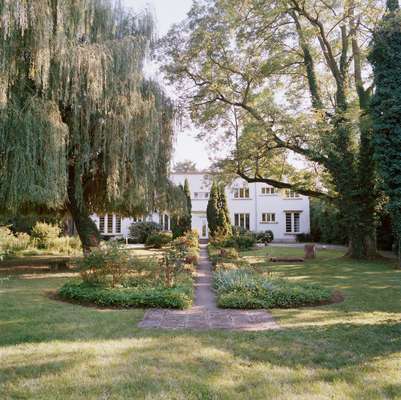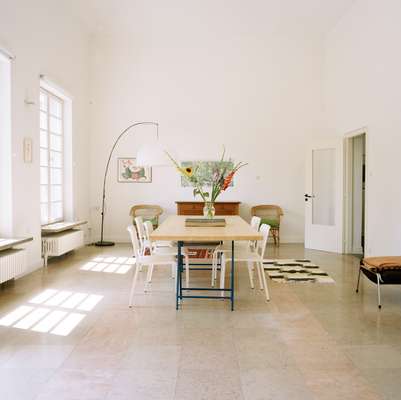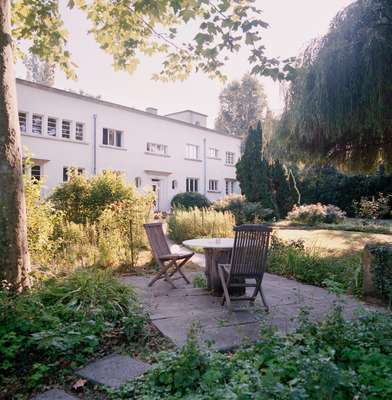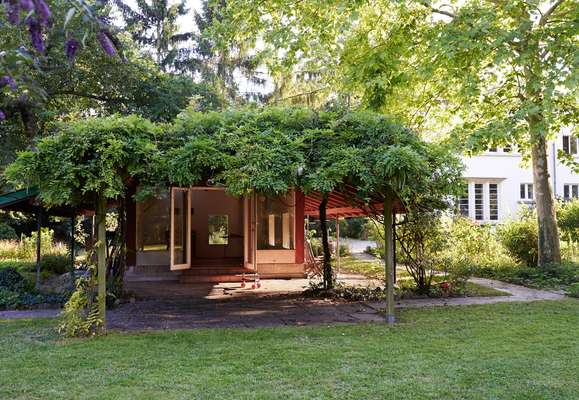Villa St Martin / Alsace
Hunt for a home
Built as a hunting lodge in the 1930s and seized by the SS during the Second World War, Villa St Martin in Alsace has a colourful history. Now an idyllic family home, its Bauhaus and art deco architectural styles
“It was very odd to do this in a small Alsatian town,” says Philipp Misselwitz, an architect whose family has lived in this curious Bauhaus-style home close to the Swiss and German borders for four years. “It required a very enlightened client.”
Jean-Eugène Adelbrecht, an Alsatian architect who trained in Paris, designed the Villa St Martin in 1934. Adelbrecht was commissioned by a local lawyer and landowner to create a hunting lodge where he could entertain and host parties after shoots in the vast surrounding forests. The site itself was pure pastoral idyll: 8,000 sq m of parkland backing on to cornfields and, far off in the distance, the Vosges Mountains and the Rhine Valley. Adelbrecht’s response to the brief, however, was far from bucolic: his vision for the two-storey, four-bedroom home was as gutsy as an Alsatian dog. From the front it’s an elemental exercise in classicism – all columns, arches and symmetry – mashed up with a faintly art deco flavour. This is the façade that, perhaps not coincidentally, faces the street. The hidden side, though, is pure Bauhaus: a long, flat, no-frills rectangular elevation asymmetrically punctuated with geometric fenestration. This hodge-podge of styles gives the house a unique character as confused as the local politics of Alsace. “It was assembled as if it had grown,” says Misselwitz.





It’s a sad fact that the home’s primary role as a hunting lodge for the European party class was short-lived: the family fled the area at the outbreak of war and the villa was seized by the SS when Germany took control of Alsace. One of the ringleaders of the occupation hosted parties and receptions here and it also served as a school.
The current owners have a picture of Albert Speer – Adolf Hitler’s chief architect – standing outside the house and there is a shooting range in the cellar (it remains unconfirmed whether this was for Nazi purposes or simply for hunting practice). “We try not to think about it too much,” says Misselwitz’s wife Ruth Ur. At the end of the war in 1945, France regained control of Alsace and the borders to Germany were immediately closed (the house is five minutes from a former checkpoint). The St Martin family took the house back but soon sold it off and divided up the land. “It went through a bleak history but the bare bones remained,” says Misselwitz.
It is no surprise that the architect and his wife were attracted to the property. Misselwitz is a professor of international urbanism and Ur is a director for a global non-profit organisation. They have lived in postings everywhere from Istanbul to Tel Aviv and, more recently, Berlin (they have a flat in Kreuzberg). Their work has fostered in the pair of them a fairly borderless approach to the world, which was the reason they searched for a family home in or around Stuttgart, right in the heart of Europe. When they happened across this modernist home in the continent’s rural heartland, Misselwitz was immediately taken: he was raised in East Germany, not far from the Bauhaus school (plenty of the family’s cast-offs appropriately furnish the villa now). Being brought up in a place where it was difficult to travel attracted him to multinational Alsace. “Now we have the ability to buy our meat in Germany and then head back to France,” says Ur. “Where else do you have that?”
Today the home is still the ultimate place for entertaining. Friends and family come and go throughout the year (Basel and Strasbourg airports are close by). “We wanted a place where everyone can pile in and hang out together,” says Ur. “The house feels like the parents have gone away and are on long-term leave. It’s a bit like being a student again.” The family lived at the villa full-time for two years but now divide their time between here and Kreuzberg. Under their ownership, they have made the home as family-friendly as possible for their two young children, Lia and Caspar.
“The building was in quite bad shape: it was run down and had been really butchered around by history,” says Misselwitz. “But we thought, ‘Let’s do it.’” A garage at the bottom of the garden was reworked to provide a pavilion for summer-time lunches – the retained structure of the old outhouse helps frame the view from the house over the fields beyond – and the parkland is chock-full of fruit trees and green lawn for the children to play on. The outhouse where the animals from the hunt would be hung is now used as a playroom. It is affectionately called the Monkey House – apparently a pet primate lived in there at some point in the home’s history. Original Bauhaus fittings such as a monolithic cabinet in the kitchen and wardrobes upstairs have been retained.
Bauhaus and art deco, French and German: this building is certainly one with multiple personalities but one that the family aim to make a permanent home for the future. After years roaming the world with work it is a hook for the family to finally latch onto. “We always wanted one base to come home to,” says Ur. “We have tried to collect our lives here.”


